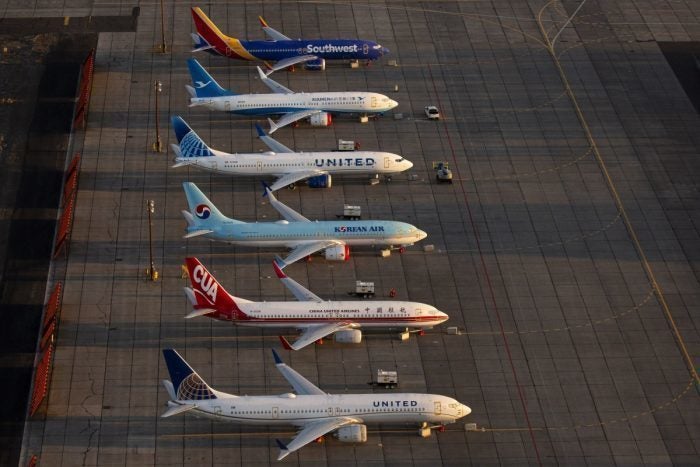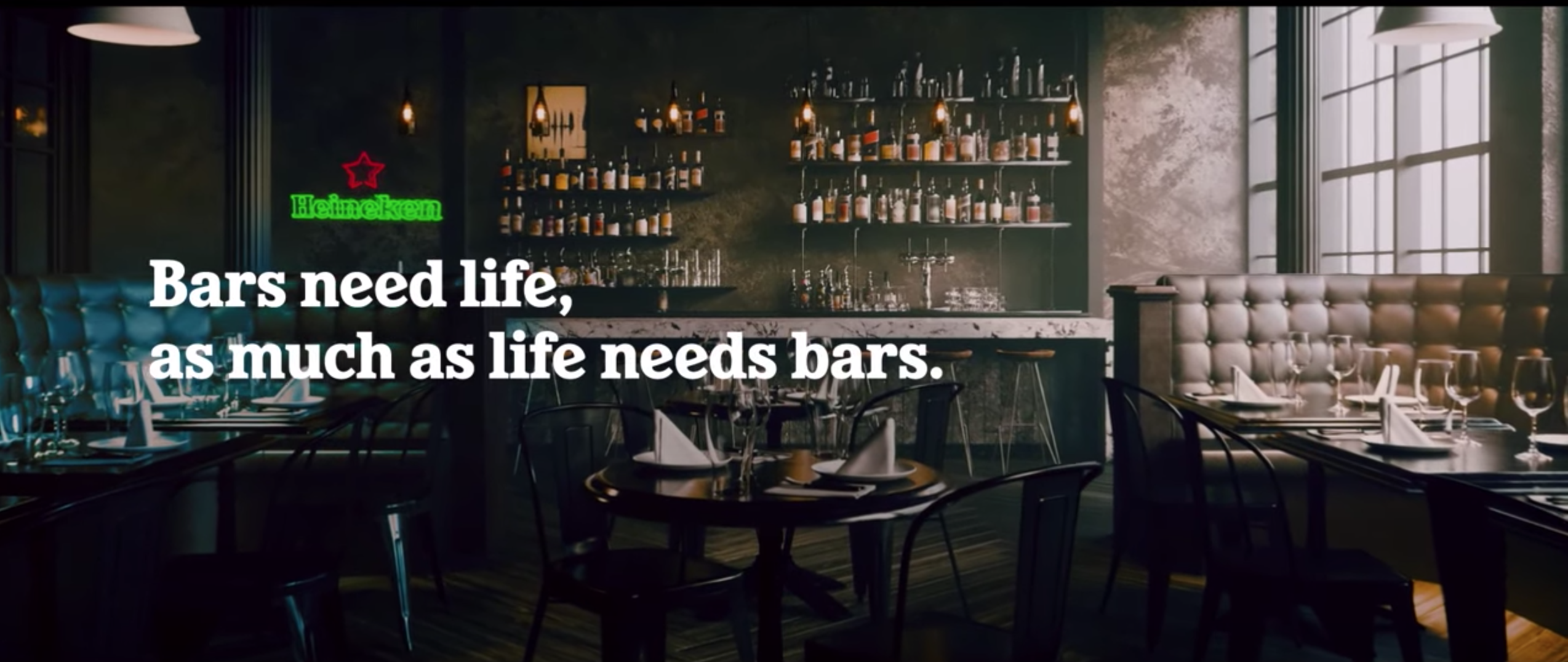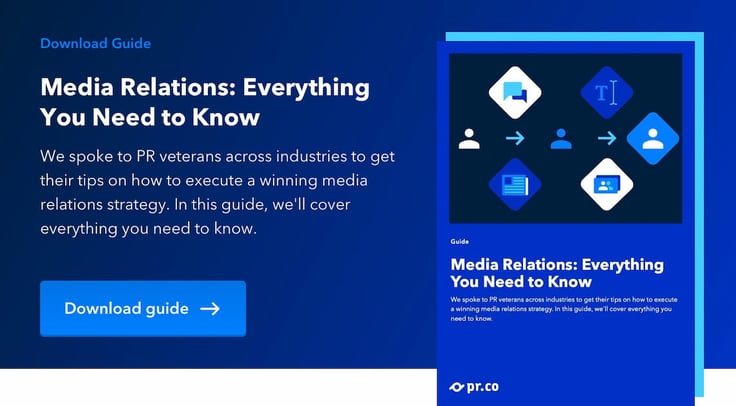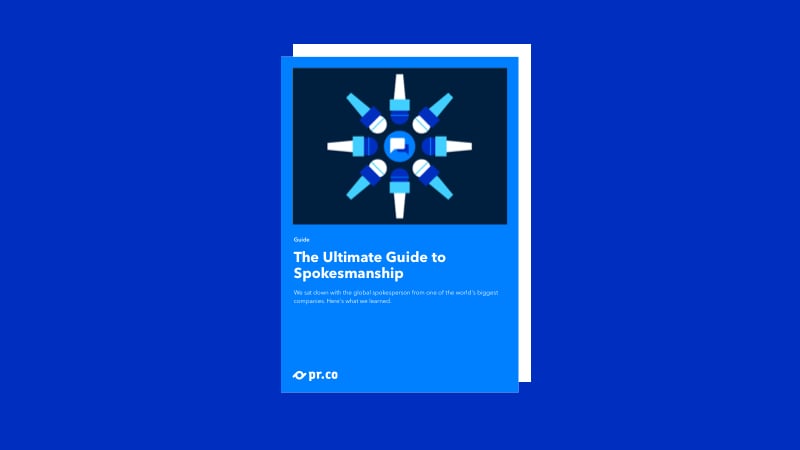As the world continues to change, communication teams are finding a way to shift along with it. Their roles have become vital in an organization, as they aid in the transition to a new normal.
How should communications departments lead the way through a crisis like the outbreak of COVID-19?
In a recent online webinar, Matias Rodsevich, owner of communications firm PR Lab, spoke with Leoni Janssen and Peter Smit, two seasoned crisis communications experts, about how organizations should adapt their communications plan to COVID-19, and other crises that might happen in the future. We realize you’re all quite busy these days, so we’ve distilled the biggest take-aways from the 60-minute conversation below.
- How can brands stay relevant in a changing world
- Is it possible to prepare for a crisis like COVID-19?
- Why is timing so important in corporate communication?
- Shifting messages and narratives while staying true to your brand
- Is it possible to stay neutral in times of crisis?
- What will happen to vulnerable industries, especially tourism and hospitality?
- How do you break sensitive news like layoffs?
- Things you can’t miss when creating a crisis plan
- Do's & Dont's of crisis communication
- Marketing or PR: Which team should take the lead in a crisis?
- Biggest learnings
How can brands stay relevant in a changing world?
Relevance is not only the goal of communication— it’s also the means to achieve it. The recipient of a message decides what is relevant for them, therefore it is crucial that brands have a feel for what is happening in society. Defining what is pertinent to your audience’s situation is a challenging task because relevance changes so quickly; what was relevant at the beginning of the self-isolation period isn't topical now, as societies prepare to face a new normality.
The outcome of COVID-19 requires brands to rethink their purpose and the messages they send out. Leoni explains: “by viewing your purpose through different angles, you can provide relevance for your company in a crisis.” A great example of this is the way countless companies have focused on helping the healthcare community. Although this aid is very much needed, sometimes a social cause and an organization’s purpose aren’t aligned. Peter uses a museum as an example. For them, it is probably more fitting to work with educational institutions, than to help doctors, as it is closer to what they stand for as a brand.
The bottom line is don’t do something just because you feel obliged to. There is no one-size-fits-all approach when it comes to relevance.
Is it possible to prepare for a crisis like COVID-19?
You cannot predict that a crisis like this will happen, but you can prepare for it. Naturally, there is a human tendency to want to bury your head in the sand, like an ostrich, when disaster strikes. If you want to build up trust and strengthen your brand, this tactic simply will not work.
In order to be prepared for a crisis, communicators should implement internal processes to identify key stakeholders and the roles of the main spokespeople. By preparing your game plan before disaster hits, your company will be able to respond with more agility - and most importantly, better.
Another step towards being proactive is the capacity to respond quickly but with transparency. Sometimes, during a crisis, it is impossible to share specifics. However, preparing your company to keep constant communication with key stakeholders should be a top priority. “If you cannot talk about content, talk about the process”, says Peter. If you are honest about your internal struggles then your audience will understand where you are coming from. This, in the long run, allows you to build up trust and stay relevant as a company.
Constant communication takes bravery, but both Leoni and Peter point out that this crisis can be the perfect opportunity to step into your role as a communications specialist and lead the way as a trusted advisor.
Being the public face of a brand is not an easy job. Here's our ultimate guide to spokesmanship.
Why is timing so important in corporate communication?
Timing is deeply rooted in context. If you've been in a crisis before, you know just how fast-paced things can get. Getting caught up in the speed of a hamster wheel tricks you into thinking it is easier to speed up rather than slowing down.
As tempting as it may be to announce your news to the media first, Peter suggests starting with your own organization. Share your news internally with your employees so that they become ambassadors who amplify your message. Leoni agrees by stating that “your own people will validate this information in their own words”. By breaking the news to your employees first not only do you alleviate anxiety within the company, but also receive initial feedback from within the company to finetune your message.
Shifting messages and narratives while staying true to your brand
In times of uncertainty, there is confusion on what and how to communicate. Should you maintain your narrative in order to achieve your sales goals? Or should your communication shift, taking into account the current situation?
“Continuing communication as we did before a crisis and expecting the same results is delusional”, says Leoni. “The way your brand talks about your products or services should be altered, but not stopped. It is an error to believe that pushing a product for the sake of reaching a goal will allow you to reach a sales target.”
Communicating in a commercial way may backfire and make your brand lose its credibility. Take Hong Kong's advertising blunder as an example. During the SARS outbreak in 2003, the city took care of communication on all fronts, except they forgot to stop running their tourism campaign in international media and local billboards. The ad allured tourists to visit by stating 'Hong Kong takes your breath away’. Given that this virus affected the respiratory system, it made the city become the punchline of a joke.
Keep in mind that people are worried about other (and more important) things at the moment. Be mindful of the tone you are using. It is not a bad idea to do something light and entertaining if your brand stands for it, but be sure that people understand that it's not with the intention to sell something.
Is it possible to stay neutral in times of crisis?
In order to support journalistic objectivity, many PR experts feel communication with media contacts should be done in an unbiased, factual, and neutral manner. Leoni’s take on whether or not brands should report in a neutral manner is: it depends. If you are communicating a message of concern, it should be vocalized with emotions. However, if you have a press release with factual information, the best advice is to stay unbiased. For example, VanMoof - a Dutch bike brand, announced a 48% increase in sales during the COVID-19 crisis. As this information might be sensitive in a time where many companies are enduring loss, their press release used a neutral tone to communicate their results-driven announcement.
On the contrary, Peter believes there is no such thing as neutral communication. Regardless of what you say and the tone you use, people will still react and have opinions on it. This ties back to being relevant and taking timing into consideration. Be strategic; if you put out a certain message using a specific tone, what is the outcome you expect from it? How will your audience react to it? If showing emotion is in line with what your audience expects from you as a brand, by all means, you should stick to this line of communication. Remember to think like a chess player and anticipate every move.
What will happen to vulnerable industries, especially tourism and hospitality?
With the uncertainty COVID-19 has brought to our lives, most companies are struggling to find a step in the right direction. For organizations in the tourism industry, it seems like it will take a long time for things to get back to ‘business as usual’. “It’s time to get creative”, Leoni suggests. “Look into your own company and find innovative ways to offer what you do best.” Going back to the case of a museum: although they might not be able to open up to the public, they have a lot of knowledge that people are still willing to consume online. As you work through this crisis, always remember to stay close to your raison d’être.
Companies have proven their creativity by coming with original initiatives, adjusting to strict measures. For example, hotels that are no longer receiving tourists, like Fletcher and Van der Walk are now offering quiet spaces for people that are working remotely. Others are adapting their rooms to host COVID patients in recovery. For other hard-hit companies in the tourism industry, such as airlines, this is a moment of survival. Communication is more important than ever, especially when it is directed towards employees, as many of them worry about losing their jobs. Peter gives a hopeful message by pointing out that in a couple of months when things go back to normal, people will be motivated to book flights and holidays again. Organizations in this industry should use this time to strengthen their brands.
Do you know your company's raison d’être? We can help you craft it. Download our communication strategy canvas for free.
How to break sensitive news like layoffs
The bad news? Laying people off or announcing deaths is probably one of the hardest tasks a communications specialist faces. The only way to break the news, Peter claims, is by being honest. In his experience, Peter has mastered the CAP formula: C stands for concern: how will you show the people involved that you care about them? A is for action: how will you carry this out? And P for perspective: what will this decision lead to in the future? In this sense, make it clear that if you, for example, have to cut 600 jobs, it is done to save 35.000 other jobs.
Leoni’s crisis checklist consists of ‘five C’s and three T’s’. The five C's are for clarity, coherence, consistency, care, and commitment. The latter two tend to be forgotten but are of equal importance. The three T’s are fundamental: Tell The Truth.
The good news? Laying people off during a global pandemic means that public opinion will be a bit more forgiving; nobody thinks it is due to mismanagement. To build trust among your internal and external audiences, Leoni suggests keeping communication cadence. Even if there is no bad news or even news at all, you should always be communicating.
In times of crisis, it's important to keep your stakeholders up-to-date with what your company is doing to reduce anxiety and rumors. Here's how we can help you do just that.
Things you can’t miss when creating a crisis plan
They say ‘never let a good crisis go to waste’. COVID-19 has brought circumstances that not many of us prepared for. Still, it teaches the lesson of being proactive when it comes to handling a crisis, even if they are unpredictable. As an organization, you must dig deep down within your own processes and structures to find the potential problems you might face. Prepare for those, sometimes uncomfortable, conversations and solve issues before they arise.
Take Boeing’s 737 scandal as an example. If their company culture had encouraged openness and rewarded whistleblowers, they might have been able to prevent the errors that cost them their credibility. By being realistic and accepting that mistakes are bound to occur, the chances of these problems turning into full-blown crises become slimmer and slimmer.

How do you create a crisis plan? Start by creating your dream team - those who will be in charge when a crisis hits. This group does not need to be big, especially when decisions need to be made quickly. Depending on the severity of the crisis, it’s advisable to have the CEO on board as a leader and spokesperson. Assign roles to specialists that will be needed in the case of an emergency.
Next, create scenarios that can occur and work out the way you will react to them in the future. Cluster your potential crisis under headers such as management, location, product, criminal, or ‘Act of God’ which are situations such as COVID-19 that might not be caused by your organization but can deeply affect it. Simulating these scenarios is a great way to practice and test if responses are carried out how they are planned, using an established protocol. Peter's bonus tip is to identify main stakeholders and specific channels to reach them in case of an emergency. It may sound silly to write down contact information such as emails or phone numbers, but comes in handy when you need to act quickly.
Do’s & dont's of crisis communication
Now and again, you tend to see an organization in crisis being covered on the news and sigh with relief as you think to yourself 'Thank God that's not me'. Think Boeing 737 or Volkswagen’s emissions scandal. The good news is that you can learn from previous mistakes and use others' experiences to transform your crisis into an opportunity.
Many brands have stepped up their game by providing ingenious solutions to battle the effects of COVID-19. Heineken, for example, has set up a platform that allows individuals to support local bars or restaurants by buying coupons to be used later. This allows small companies to have cash flows and clients when things return to normal. Heineken proves you can use your brand to help people stay in business.

Aviation Gin also tried to help those who have been hit the hardest during this crisis. They have committed to donating 30% of revenue to bartenders who have been forced out of their jobs due to the pandemic. In theory, it sounds great, says Leoni, but in practice, it may seem hard to believe that they will reach out to a group of people that are not necessarily gathered in one place. This comes across as a half promise and can be interpreted as a commercial stunt.
Marketing or PR: Which team should take the lead in a crisis?
In times when budgets are slashed and teams are cut down, communication turns back to its core: good old storytelling. Of course, both marketing and PR specialists have their fortes, but the current situation calls for flexible yet cautious professionals to take the lead. Peter believes that PR specialists tend to go beyond campaigns, they are more analytical and cautious about how to proceed. Leoni supports the idea that it is a moment for PR teams to shine as these times require professionals that can nurture relationships, both within and outside of an organisation.
Biggest takeaways
"This is a scary time for everyone", Leoni says, "but don't assume everyone knows better than you. No one has been through this type of crisis before, so we are all sticking it out together, to get through this. Trust your gut feeling but also open up to fellow colleagues and community to share your fears and lessons learned."
Peter's final advice is: "be brave. This situation will eventually go away and things will slowly get back to normal. Use this crisis as an opportunity to have conversations that are long overdue. Use this crisis to step up your game and build a reputation that will last".

Leoni Janssen is a branding and communications specialist who focuses on brand positioning and crisis preparedness and management. She holds an impressive array of clients under her belt such as Microsoft, Blackberry, and Oracle.
Peter Smit, has more than 30 years of experience as an independent consultant in crisis and issue management. His specialty lies in reputation management and media relations. Peter has worked with brands like Heineken, KPN and Royal Phillips Electronics.
Ana is a marketer at pr.co, and is the driving force behind our 100+ articles and guides. Ana has an MSc in Corporate Communications, and four years of experience in the PR industry. Now, Ana distills knowledge from pr.co’s 250+ customers to help PR professionals get better results through high-quality content.. Connect on LinkedIn or send an email






